
BY JUDY CARMACK BROSS
Walking into the Stevanovich Institute, surely one of the brightest most welcoming buildings on the University of Chicago campus, you are once again aware that learning can be pure joy. Thanks in large part to the inventive paths developed by Shadi Bartsch-Zimmer, a discoverer of the mysteries and marvels of learning, the institute is dedicated to the formation of knowledge.
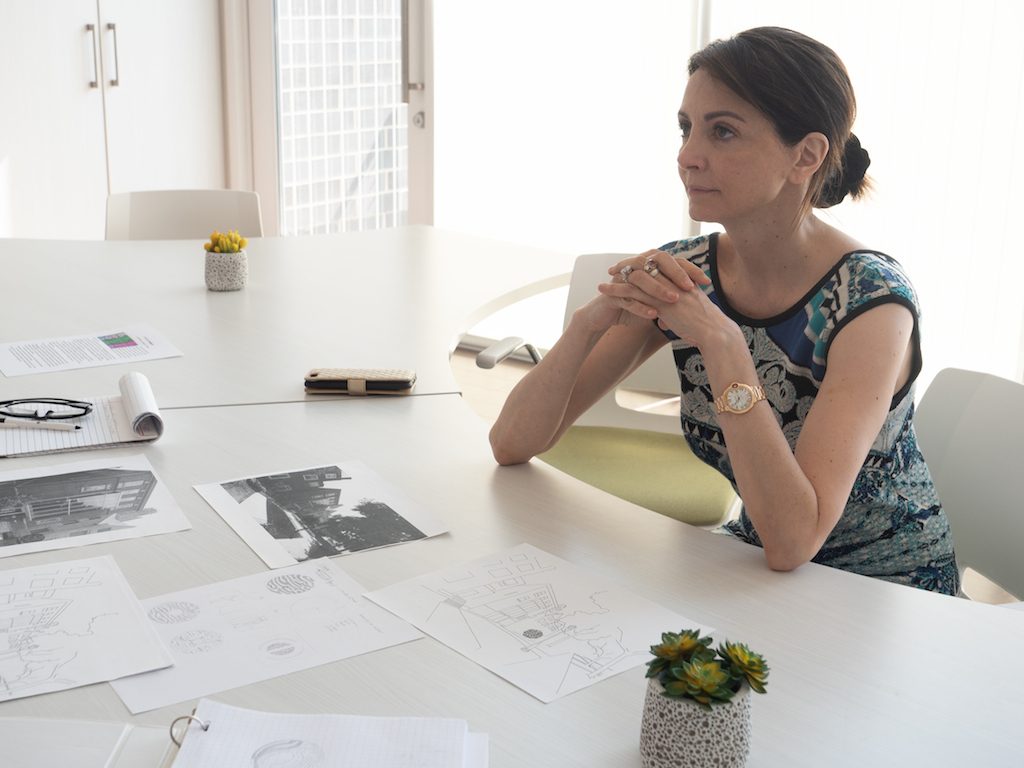
Shadi Bartsch-Zimmer. Photo by Tenisha Brownlee.
By devoting itself to breaking down intellectual borders between disciplines and engaging the public in the process Bartsch-Zimmer, Co-Founder and Inaugural Director of the Institute and Helen A. Regenstein Distinguished Service Professor in the Classics Department and the College, hosts provocative, sold-out lectures, engaging scholars to explore the foundations of knowledge.
We recently toured the institute on University Avenue, had tea in the light-filled taberna overlooking the Japanese Garden that Bartsch-Zimmer and staff created, and met a young sculptor, Kevin Pang, a University of Chicago Master of Fine Arts student, chosen by the director to add public art to the building and amplify the perspective of art to the dialogue.
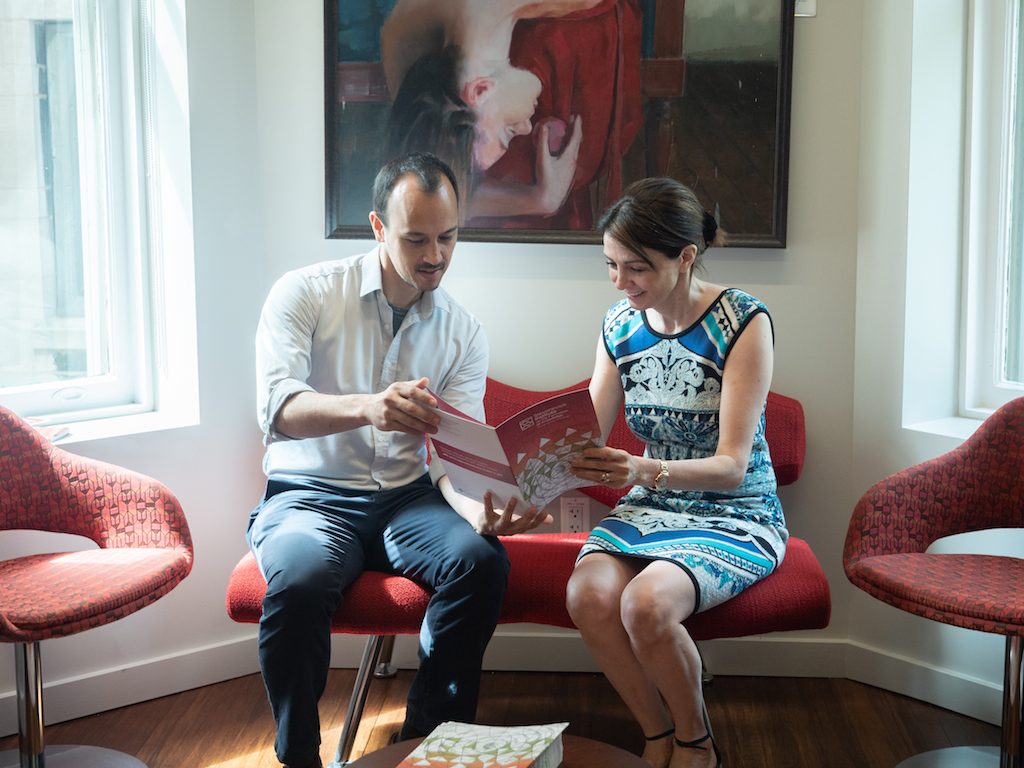
Kevin Pang and Shadi Bartsch-Zimmer. Photo by Tenisha Brownlee.
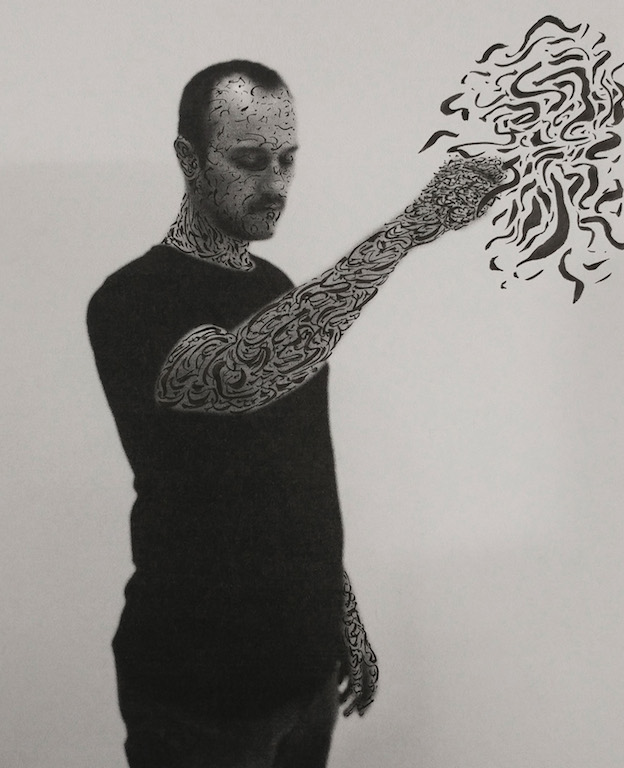
An untitled self-portrait of artists Kevin Pang.
It is hard to imagine a more vibrant person than Bartsch-Zimmer who brings clarity to any issue. Both elegant and eloquent, she adds spontaneity, genuine warmth, and a terrific sense of humor to a conversation. Scholar, incredibly prolific author, international lecturer, occasional Huffington Post contributor, and frequent leader of global initiatives in China and other countries, Bartsch-Zimmer shared the beginnings of the Stevanovich Institute: “Starting in 2015, I led a university-wide initiative to explore the historical and social contexts in which knowledge is created, legitimized, and circulated. The institute comprises over 40 core faculty and 8 postdocs who work with local and international scholars on joint research beyond recognized disciplinary boundaries.”
The programs—“debates not on Twitter but in real time”—lead scholars and the wider audience to question the status quo across many fields of knowledge including economics, medicine, law, science, and religion. In October the institute will bring in New York Times columnist and University of Chicago graduate David Brooks to moderate “A Meeting of the Minds: Business and the Human,” which engages Ayelet Fishbach, Professor of Behavioral Science and Marketing at Chicago Booth, and Agnes Callard, Associate Professor of Philosophy. Macol Cerda is the institute’s executive director.

Macol Cerda.
For Bartsch-Zimmer, color, art, and welcoming approaches are key. Paintings, many by new artists, add to the lightness of the institute, cozy nooks accentuated with bright colors invite the scholars to escape from Hyde Park classrooms and posit their thoughts in private or with others.
Soon the invitation to learn will be extended well before you walk in the door. Visitors will be greeted by a new piece of public art that will join a campus collection that includes luminaries such as Henry Moore, Guiseppe Penone, and Richard Serra. Kevin Pang is currently completing drawings of a geometric sphere, large enough to walk through, which will have intriguing hints of Arabic and Chinese calligraphy and different impressions inside and outside, relating perhaps to a global perspective.
Pang, a graduate of the University of Washington and an artist since childhood in Greenville, South Carolina, where the local newspaper celebrated his drawing abilities in grade school, called the University of Chicago’s Visual Arts program “the best in the country.”

Kevin Pang, Untitled, 2019.
He elaborated on his aim: “My work is unique to each point in time and purpose. It takes into consideration as many aspects of that particular moment and environment as possible and combines them with my own designs and expression.”
“Similar to the institute, my work does not compartmentalize specific areas of knowledge and skill, and instead, works to bring them all together with individuals and community,” he continued. “For each time and place, I believe there is a singular and optimal work that can be created that takes ‘everything’ into consideration. The key is bringing the material, environment, and design together in a way that allows the beauty of that combination to ring through. Whether a painting, sculpture, performance, or combination, my work aims to reflect the delicate balance and harmony, with the moment and community.”
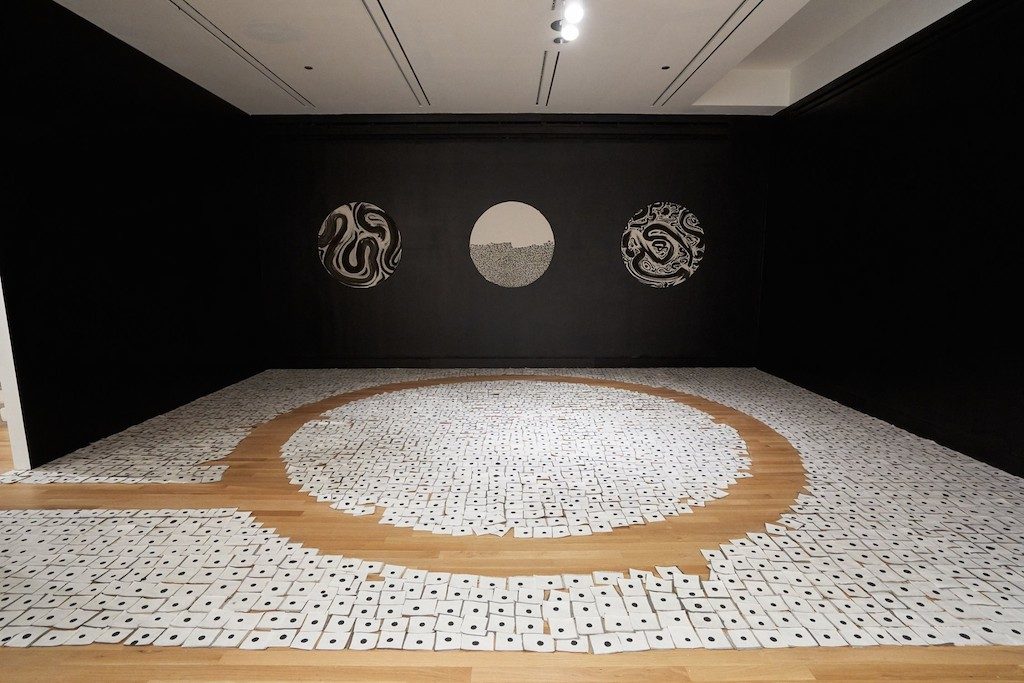
Kevin Pang, Vocab Test 1 v.118, 2019. Photo by Jad Dashan.
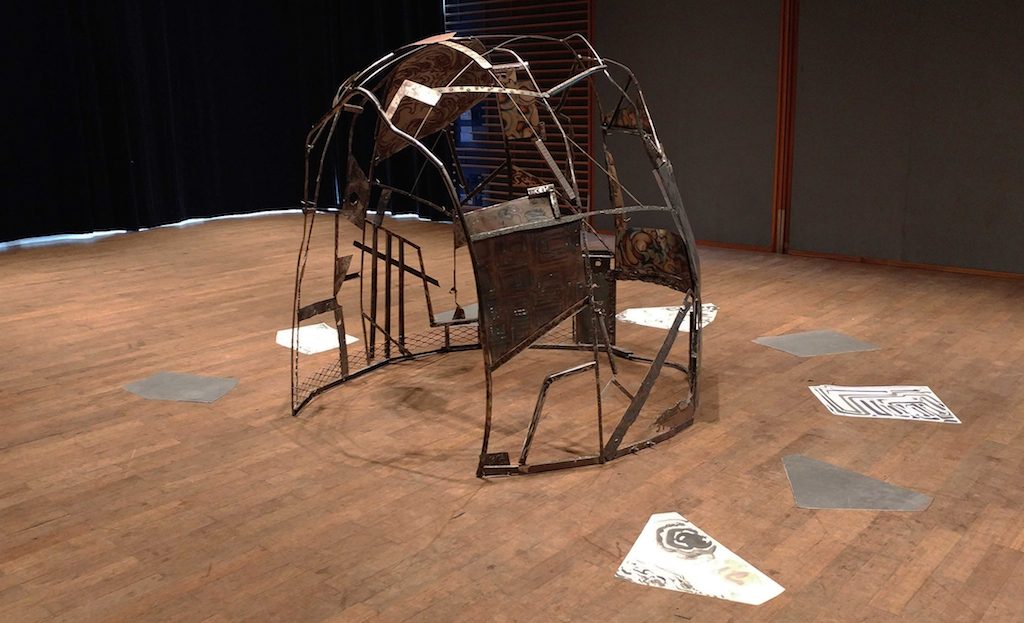
Kevin Pang, Untitled, 2018.
To Bartsch-Zimmer, public art such as Pang’s creates an opportunity for viewers “to see things differently and then talk about their perspectives.” She says, “Art forefronts the interpretive experience in a way that is less obvious, but equally important, in other disciplines. One of the things we like about Kevin’s piece is that we can walk around, go inside it, let it be interactive. There’s a yin and a yang to it—opposites, yet a symbolic whole as well. And there are always conflicting ideas.”
She relates this idea to the Stevanovich philosophy: “Our scholars and thinkers are driven to question the status quo. For example: How do political regimes impact practices of law or why did China and the West develop at different paces? How is ‘selfhood’ understood across different cultures? What do we make of recent research showing that our bacteria shape our behavior? There are always conflicting ideas when you put fields of knowledge side by side.”
I asked Bartsch-Zimmer what she thought of public art. “Well, one effect of public art is often to provoke people to ask: Why is this art? And their reactions are telling too. In Chicago, for example, people have liked the Bean from the first, and I wonder if one of the reasons is that it is reflective—a sort of precursor of the selfie.”
Earlier in the year, the artist Audrius Plioplys filled the large windows of the Stevanovich Institute with whirling sculptures back-lit in changing colors and made in part from the artist’s MRI brain scans—perhaps an artistic iteration of thought in process.
“Our new series of undergraduate courses that bring together theory and practice will offer students opportunities to rethink the knowledge gained in their specialized areas of expertise, to challenge themselves by placing this knowledge within a fuller context, and to set the stage for becoming not only experts but also innovators in their chosen field. It will help them contextualize their own knowledge of the world in ways that can be beneficial to their intellectual development and life choices in our globalized world,” Bartsch-Zimmer explains.
“We believe that the results of our inquiries equip scholars, leaders, and intellectuals around the globe with the means for more effective discourse and unexpected solutions to improve the world,” she adds. “Like Kevin Pang’s new work, we invite people to open up and go inside.”
For further information, visit sifk.uchicago.edu.







